Visual perception, raster displays
CS 248 - Introduction to Computer Graphics
Autumn Quarter, 2004
Marc Levoy
Lecture notes for Thursday September 30
Table of contents:
- Raster displays
- Spatial resolution - How many pixels do we need?
- Frequency sensitivity - sine wave gratings
- Phase sensitivity - vernier acuity
- Temporal resolution - How many frames per second?
- Intensity quantization - how many bits per pixel?
Note:
There is more detail in these notes than I covered in my lecture today, mainly
on the topic of CRTs. As I mentioned in class, I am gradually cutting back my
coverage of that increasingly obsolete topic. You are not responsible (e.g. on
the exams) for material I didn't cover in class. For most classes, the written
notes will follow the lectures more closely.
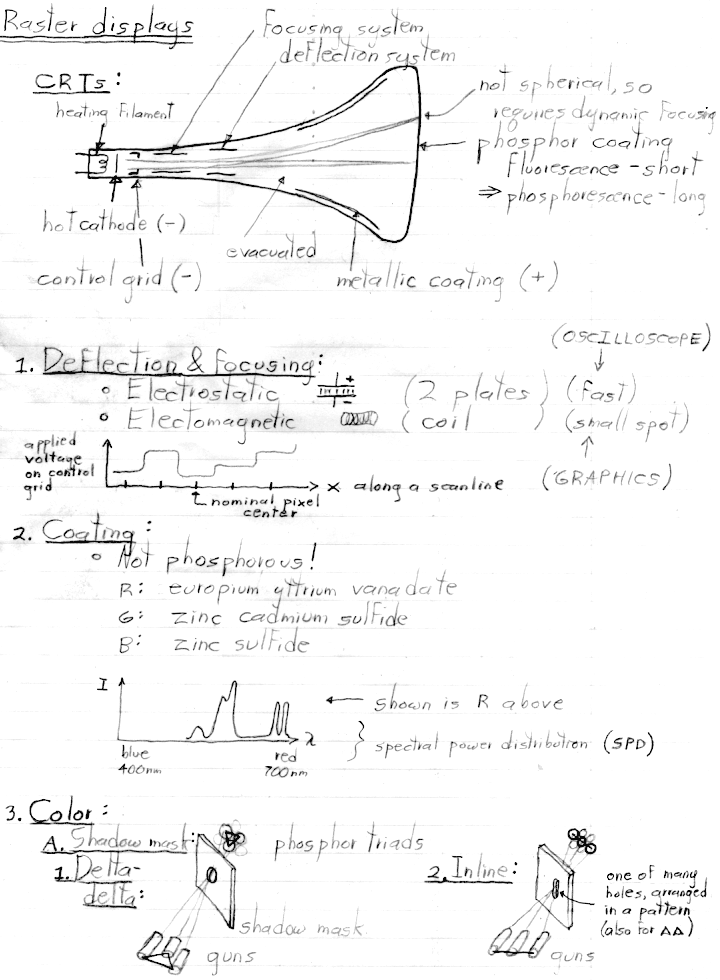
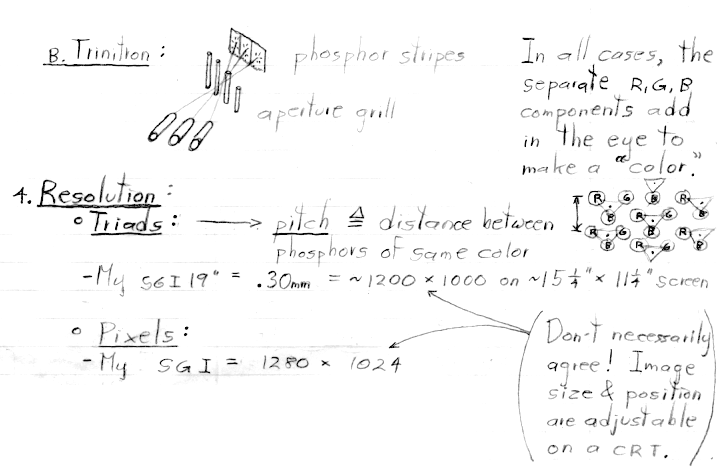
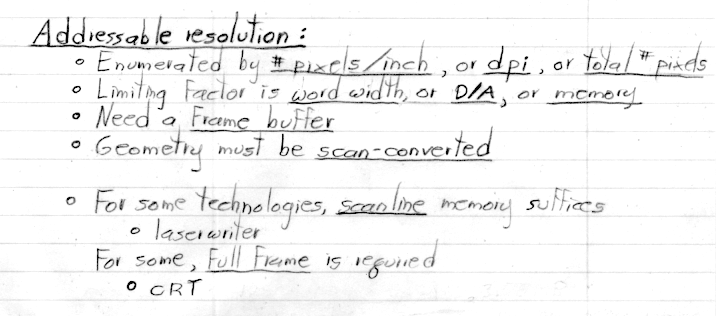
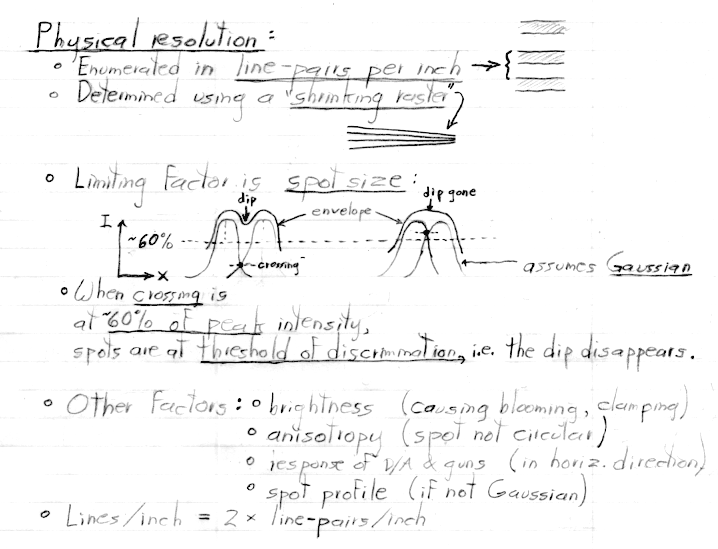
Press here for the Powerpoint slides I showed in class
about triads and pixels (HTML or
PPT or
PDF).
For now, ignore the rightmost two columns on the second slide. We'll talk
about subpixel font rendering technology after we've covered rasterization and
antialiasing; it will make more sense to you in a few weeks than it would now.
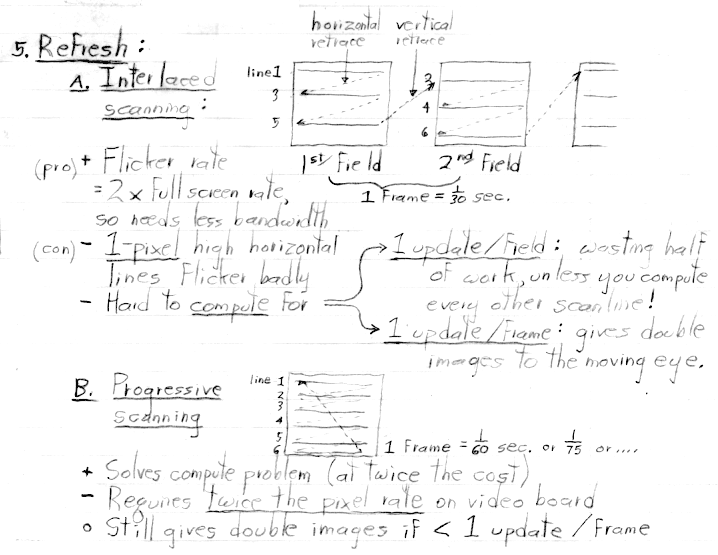
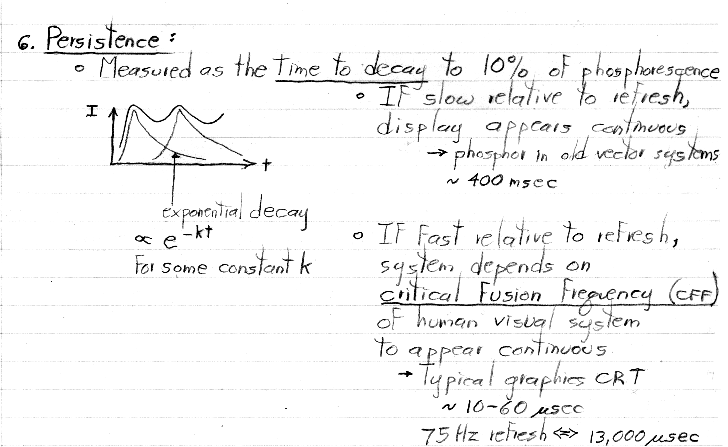
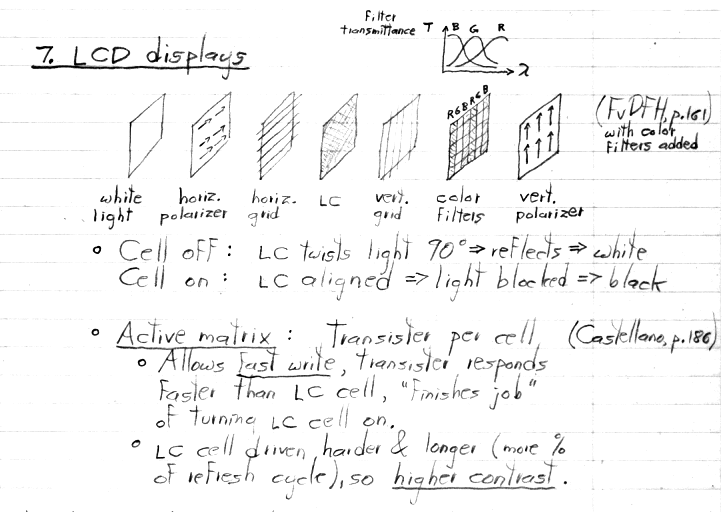
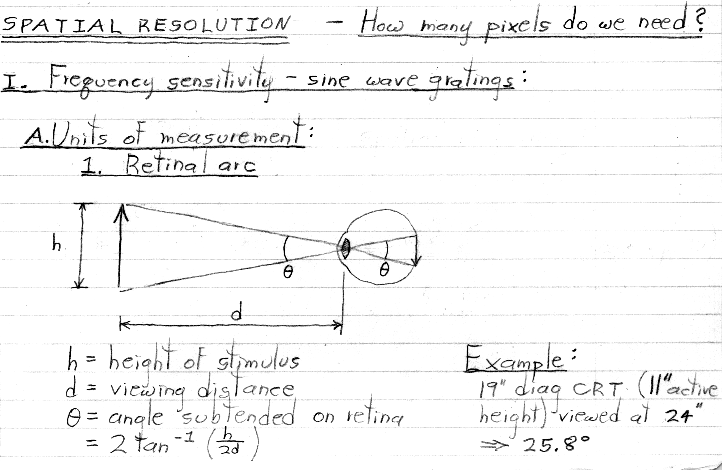
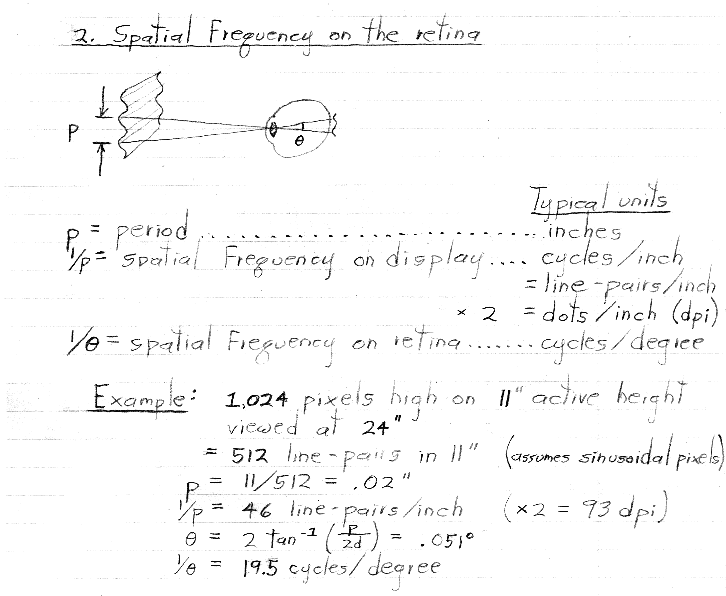
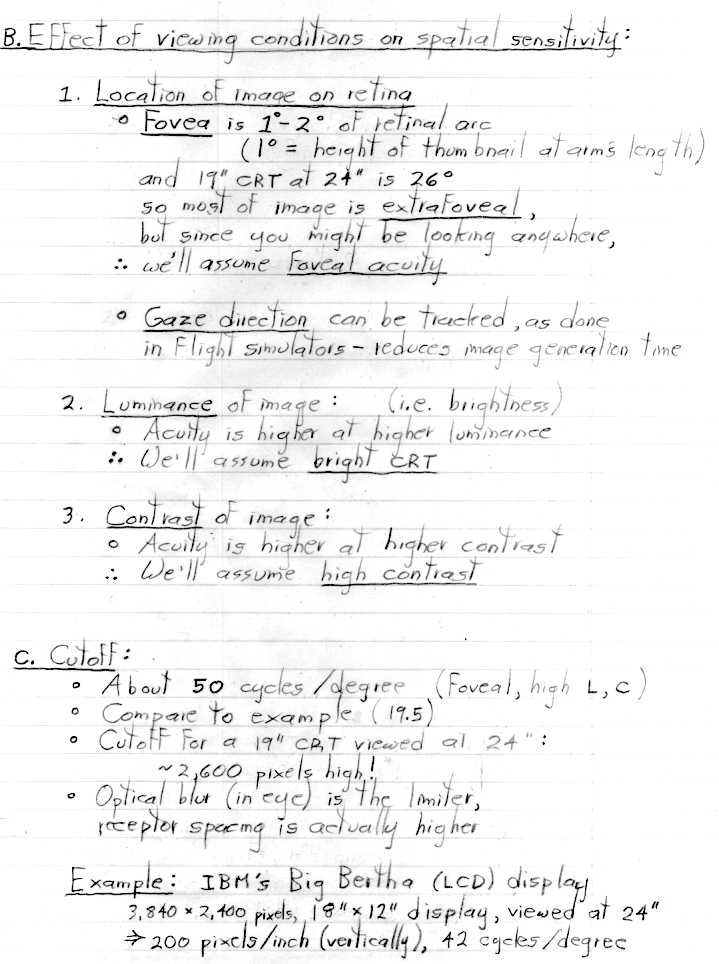
Section D requires an understanding of Fourier analysis, which we won't cover
until Oct. 7, but in case you're interested...
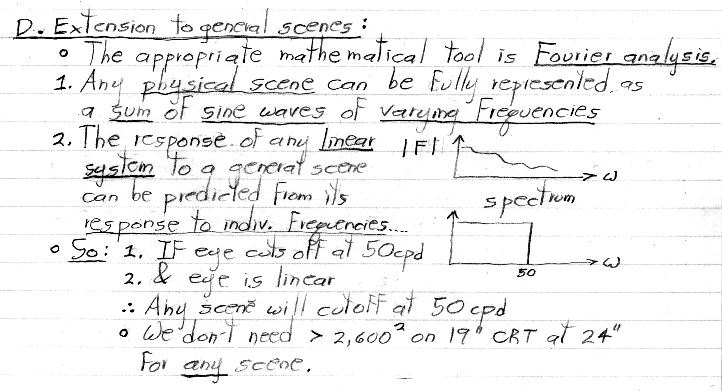
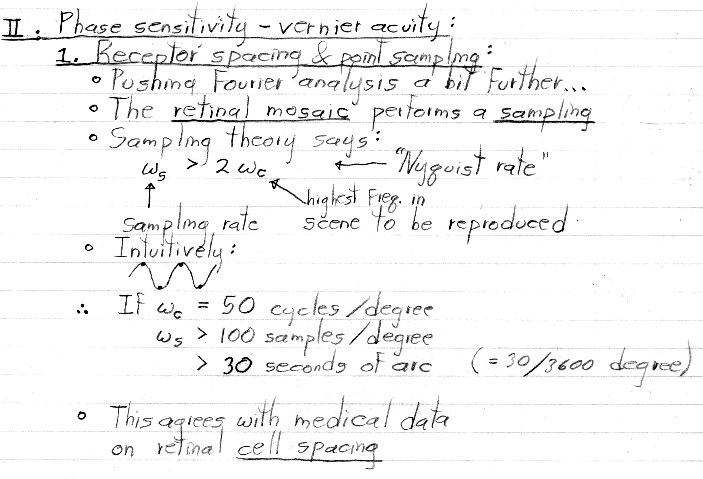
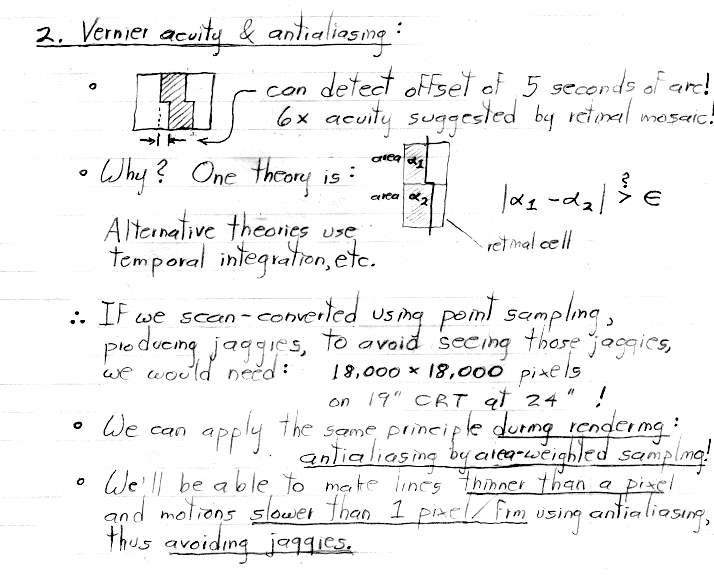
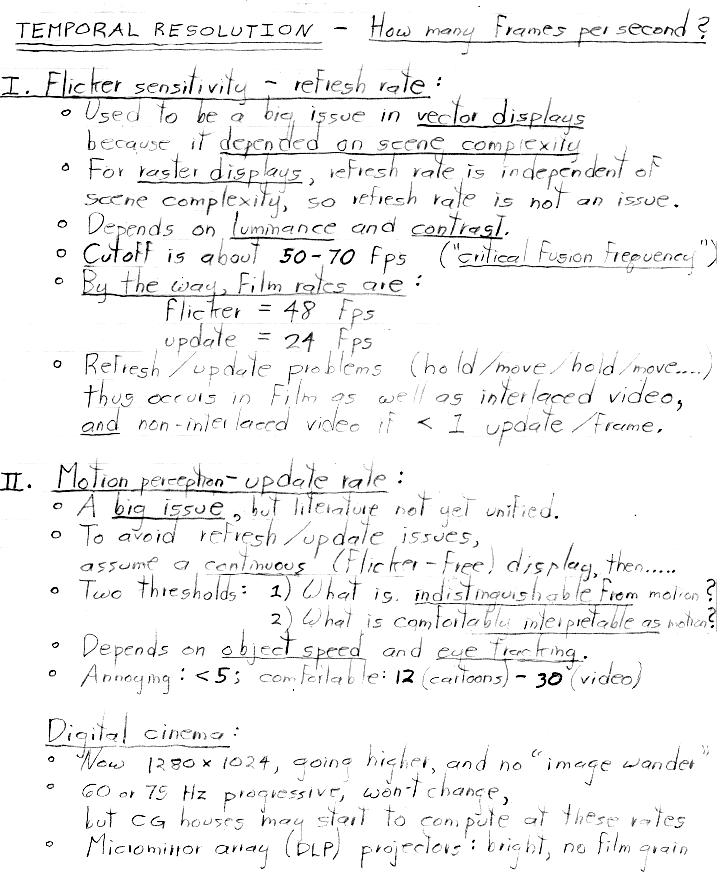
I didn't cover lag in class, but in case you're interested...
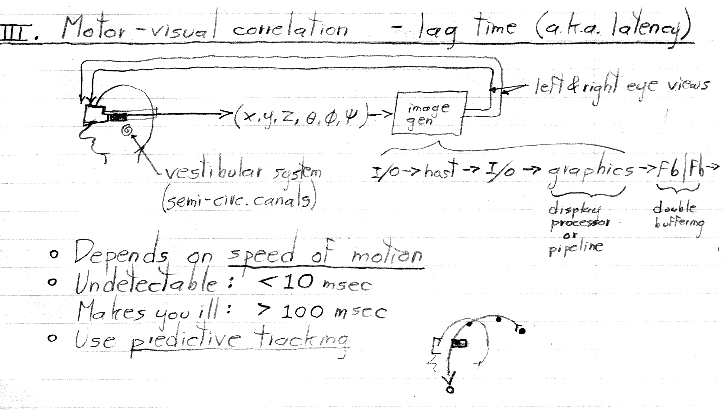

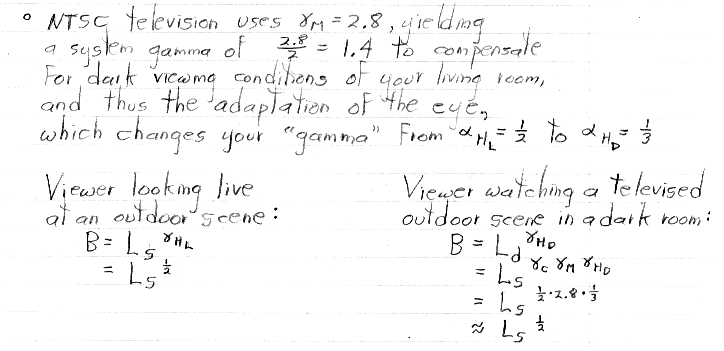


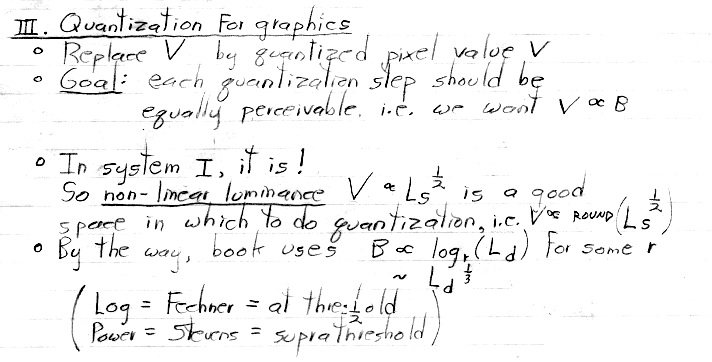
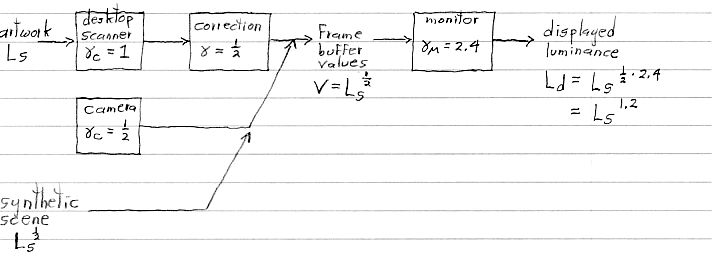
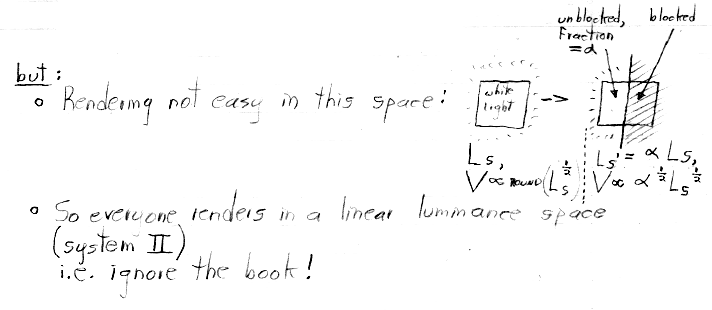
IV. So how many bits do we need per pixel?
- Synthetic images: 6-8 bits.
Some people claim they need more.
- Quantization in a linear perceived brightness space:
5 bits looks acceptable (at least for this example)
- Scanned/painted images: 5 bits usually ok.
Why? Noise breaks up contouring artifacts.
- Antialiased edges: 3 bits suffice!
Why? Shorter distance, so contours are compressed.
This example was also hand drawn, which breaks up contours.
Click here to see a
demo of quantization levels.
Make sure you view this demo on a gamma-corrected monitor,
as the instructions say.
[email protected]
Copyright © 2004 Marc Levoy
Last update:
October 14, 2004 06:56:44 PM
























